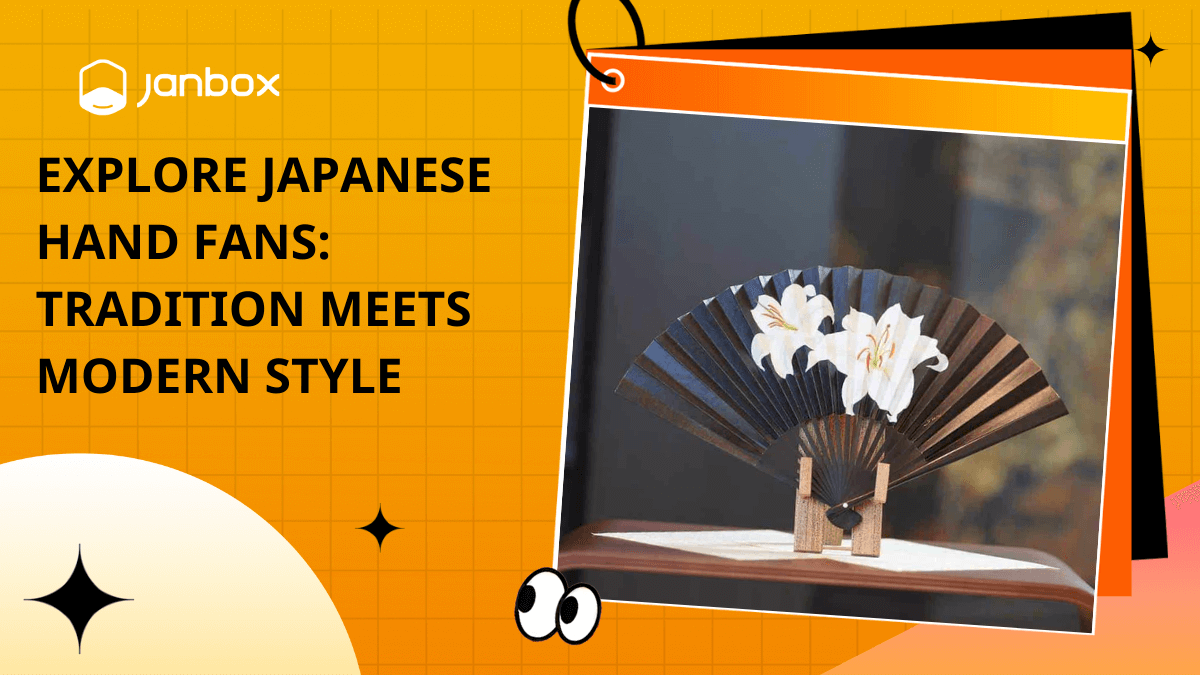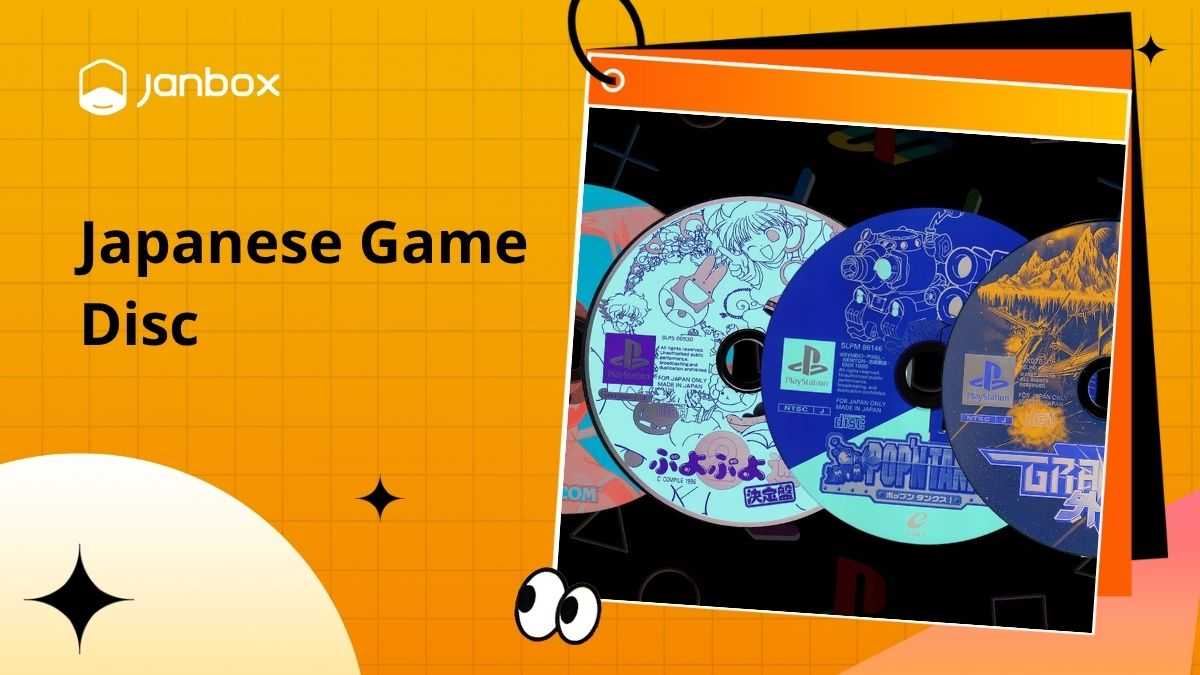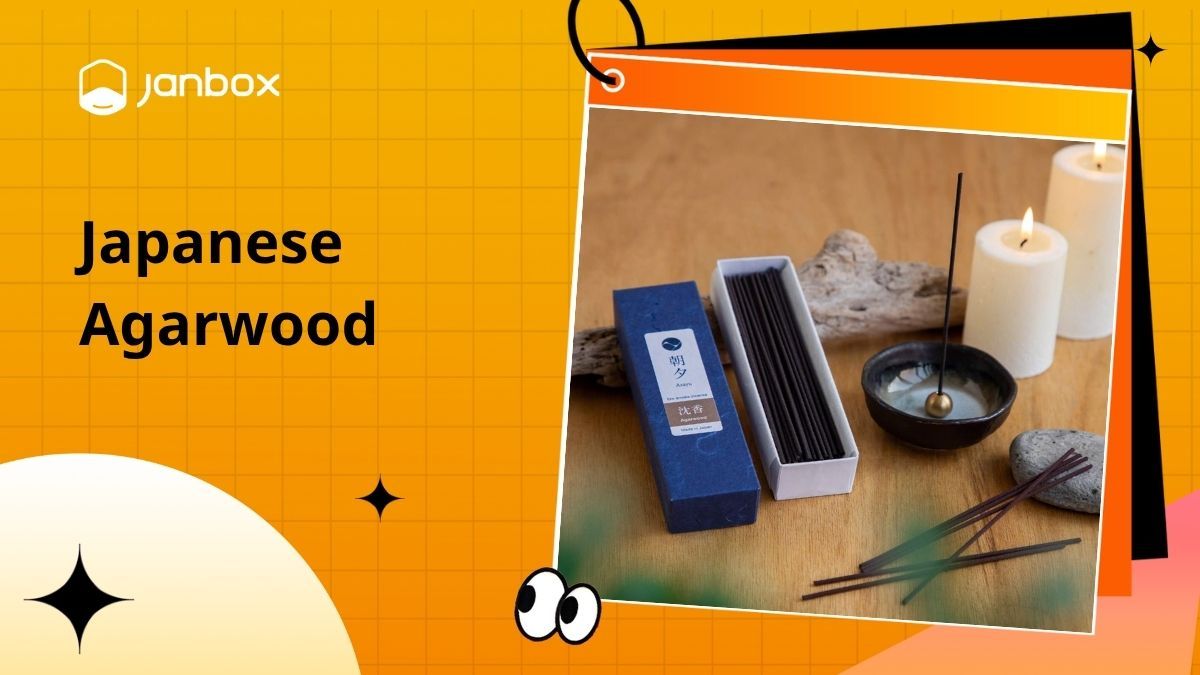The kimono obi belt is more than just a fashion accessory—it’s a symbol of Japanese tradition, artistry, and identity. Worn with the iconic kimono, the obi belt adds elegance, structure, and cultural meaning to the outfit. From ceremonial maru obi to casual hanhaba styles, each type tells a story. This article explores the beauty, history, and versatility of obi belts, offering insight into their timeless role in Japanese fashion and culture.
1. What Is A Kimono Obi Belt?
A kimono obi belt is a wide sash traditionally worn around the waist over a kimono or yukata. More than just a practical fastening tool, the obi is a key element that defines the silhouette, style, and formality of the kimono ensemble. Worn by both men and women, the obi has evolved into a rich form of artistic expression within Japanese fashion.
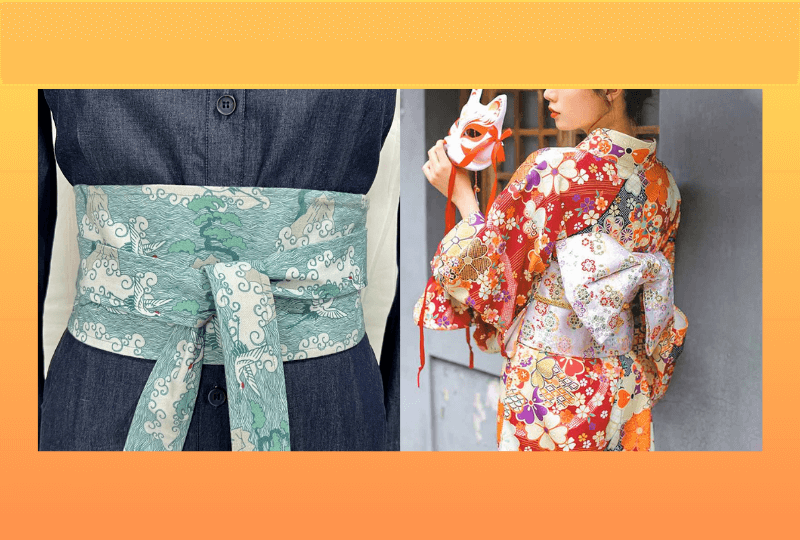
For women, the obi is often long, wide, and elaborately designed, serving as a central visual point of the outfit. Men’s obi belts tend to be narrower and more subdued. The process of tying the obi also varies between genders, with women’s knots typically more decorative and intricate.
Obi belts are crafted from a variety of materials including silk, cotton, and synthetic fibers. Silk obi are the most luxurious and are usually reserved for formal occasions. Casual obis, like those worn with yukata, are often made from lighter materials and come in vibrant colors or playful patterns.
As a traditional kimono belt, the obi plays an essential role in Japanese clothing culture, both historically and in modern interpretations. Today, obi belt Japan styles are even being adapted into global fashion, proving the timeless allure of this cultural icon.
2. Historical Background Of Obi Belts
The kimono obi belt has a rich and evolving history that reflects broader cultural shifts in Japanese society. Originally, during the Heian period (794–1185), obi belts were simple, narrow cords used primarily for practical purposes—to keep the kimono in place. These early obis were understated and held little decorative significance.
By the Edo period (1603–1868), the kimono had become more elaborate, and so did the obi. As the kimono became a canvas for status and self-expression, the kimono obi transformed from a functional tie to a bold fashion statement. It grew in width and began to feature detailed embroidery, brocade, and symbolic patterns. Women’s obi belts, in particular, became ornate and symbolic of femininity, artistry, and elegance.
In the Meiji and Taisho eras, Western influence began shaping Japanese fashion, but the obi belt Japan remained a stronghold of traditional identity. It evolved alongside modern tailoring techniques, introducing new materials and styles.
Today, obi belts serve not only traditional ceremonies like weddings and tea ceremonies but are also adapted into avant-garde fashion and global design. Despite changing times, the obi continues to symbolize the enduring beauty and cultural depth of Japan’s textile heritage—blending function, art, and identity into a single elegant form.
>>> Read more: Japanese Kimono Types – All You Need To Know about Kimono
3. Types Of Obi Belts
The variety of kimono obi belts reflects the richness of Japanese culture and the diversity of traditional wear. Each obi type serves a distinct purpose, ranging from highly formal occasions to casual summer outings. Below are the most well-known types of obi belt Japan has to offer:
3.1 Maru Obi
The maru obi is the most formal and luxurious type of obi, traditionally worn for ceremonial events such as weddings and performances. Made from a single bolt of fabric and fully patterned on both sides, maru obi are thick, heavy, and often adorned with rich embroidery or gold thread. Due to its weight and length (typically over 4 meters), this kimono belt requires skill to tie and often needs the help of a professional dresser. Today, maru obi are rare and mostly found in vintage collections or worn by geishas and brides.
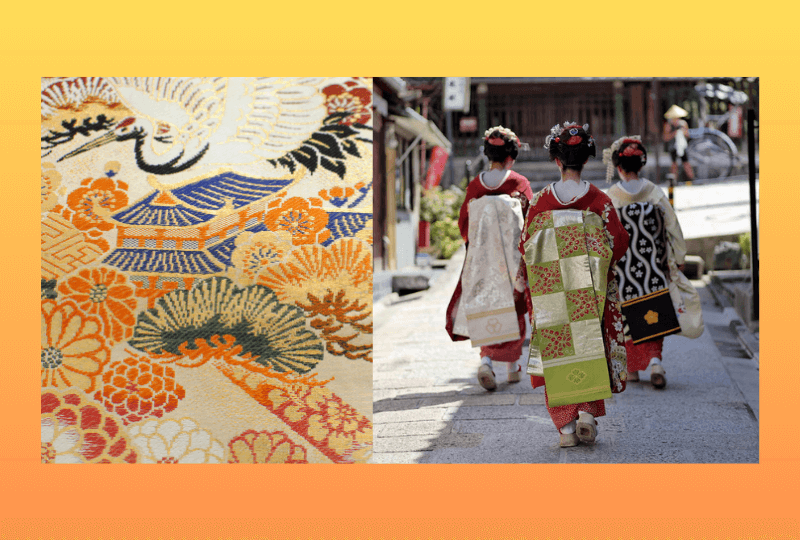
3.2 Fukuro Obi
Less formal than the maru obi but still highly elegant, the fukuro obi is a popular choice for formal occasions like parties and ceremonies. It’s slightly lighter, as only the outer side is fully patterned while the inner side remains plain. This type of obi balances beauty and wearability, making it ideal for women who want a touch of formality without the complexity of a maru obi. Many kimono obi enthusiasts prefer fukuro obi for its practicality in modern settings.
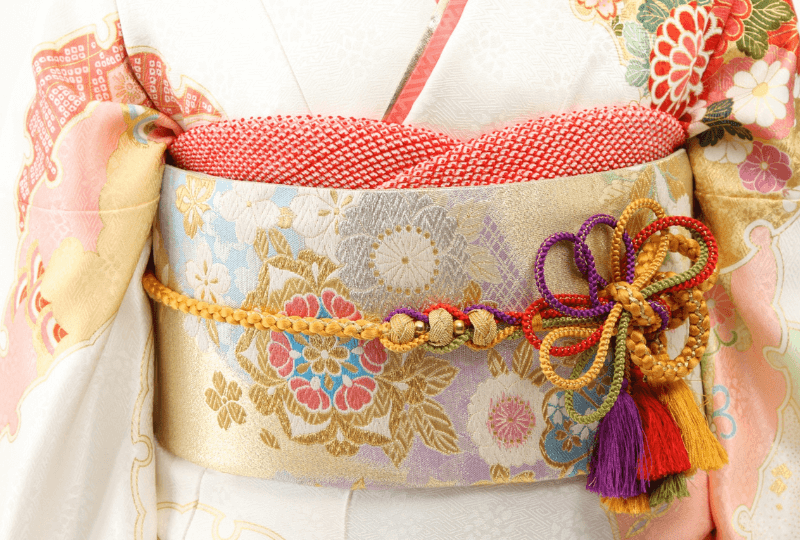
3.3 Nagoya Obi
The nagoya obi is one of the most widely used obi styles for semi-formal and casual kimono. Designed in the Taisho era, it features a pre-folded section at one end to make tying easier, especially into the popular taiko musubi (drum knot). It’s shorter and lighter than formal obi types, yet still elegant. Nagoya obi strikes a balance between traditional grace and modern convenience, making it a staple in the wardrobes of many kimono wearers.
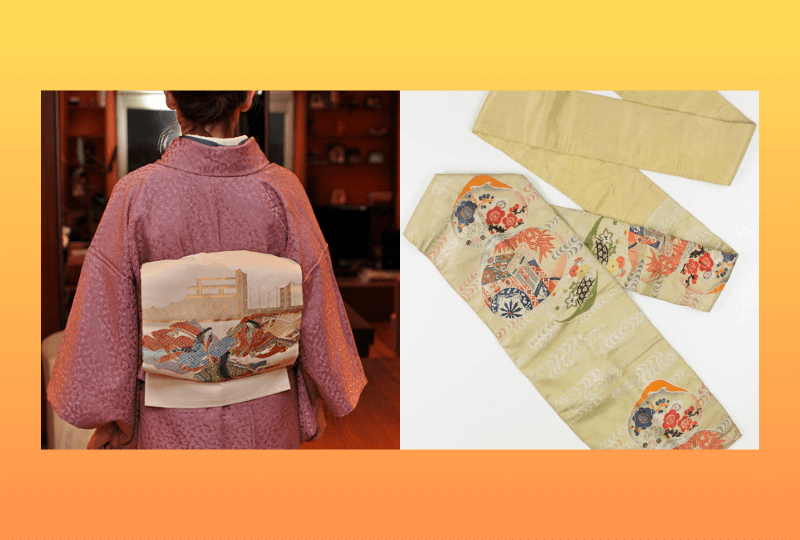
3.4 Hanhaba Obi
The hanhaba obi, or “half-width obi,” is casual, colorful, and easy to wear. It’s commonly paired with yukata (summer kimono) or informal kimono styles. Hanhaba obi are usually made of cotton or synthetic fabric and feature playful patterns that make them popular among young women and festival goers. The simplicity of tying a hanhaba obi makes it an excellent choice for beginners or those dressing themselves.
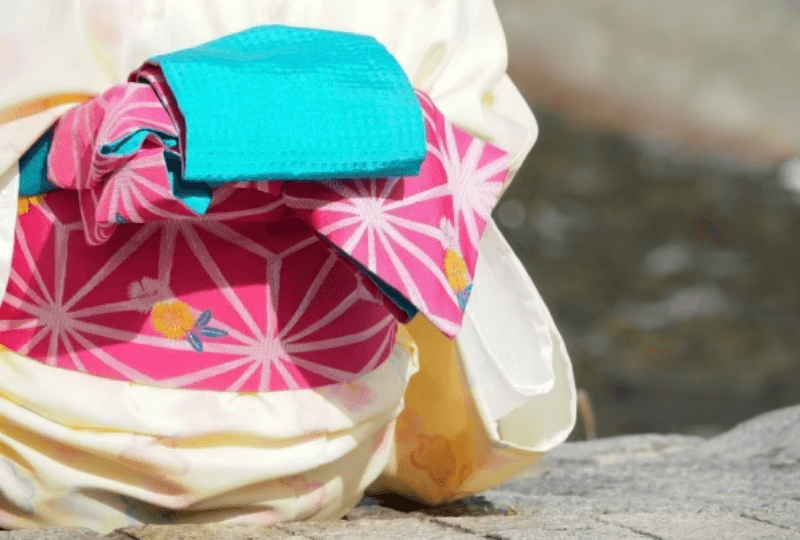
3.5 Heko Obi
The heko obi is a soft, flowing sash typically worn by men, children, or during very informal occasions. Unlike structured obi belts, heko obi are made from lightweight silk or gauze and tied in loose, decorative knots. Though considered informal, heko obi have gained popularity among fashion-forward kimono enthusiasts looking for a more relaxed look. Some modern designers even incorporate heko obi into contemporary streetwear.
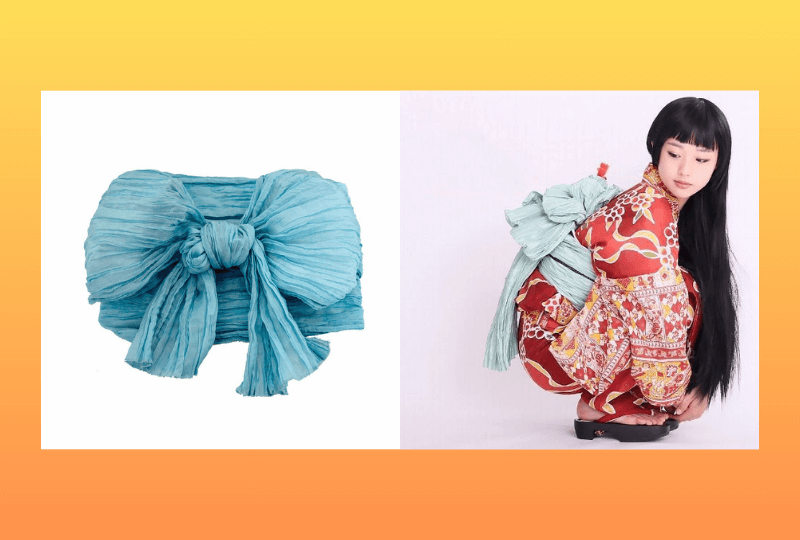
4. How To Tie An Obi Belt
Tying a kimono obi belt is both a practical task and a form of artistic expression. The way the obi is tied can significantly affect the overall impression of the outfit. There are many knot styles—some simple and casual, others intricate and formal. Below are the most common ways to tie an obi belt Japan style.
4.1 Bunko Musubi (文庫結び – “Library Knot”)
The Bunko Musubi is one of the most popular obi knots for women, especially with hanhaba obi and yukata. It resembles a bow and is perfect for casual or semi-formal settings.
Steps:
- Wrap the obi around the waist twice.
- Fold one end into a loop (the “book”).
- Cross the other end over and tie into a bow.
- Adjust the loops to make them even and symmetrical.
This knot is charming, easy to learn, and ideal for beginners dressing themselves.
4.2 Taiko Musubi (太鼓結び – “Drum Knot”)
The Taiko Musubi is the most iconic and formal obi knot, often seen at weddings, tea ceremonies, and on married women’s kimono.
Steps:
- Wrap the kimono belt around the waist and tie a base knot at the back.
- Fold the obi into a rectangular “drum” shape.
- Tuck and secure with a cord (obijime) and pad (obiita) for structure.
- Finalize the shape and flatten the back.
It creates a neat, boxy finish and pairs best with nagoya or fukuro obi.
4.3 Kainokuchi Musubi (貝の口 – “Clam’s Mouth” Knot)
Traditionally used for men’s kimono, the Kainokuchi Musubi is simple, sturdy, and functional. It’s commonly worn with kaku obi, the stiff, narrow obi for men.
Steps:
- Wrap the obi once or twice around the waist.
- Tie a flat square knot in the front or back.
- Tuck the ends neatly for a sharp finish.
This knot emphasizes masculinity and is often used for martial arts uniforms (keikogi) as well.
>>> Read more: What is the difference between a Yukata and a Kimono?
5. Styling Tips: Matching Obi With Kimono
The harmony between a kimono obi and the kimono itself is essential to achieving a balanced, elegant look. While tradition plays a role in color coordination and formality, modern styling allows more room for creative expression.
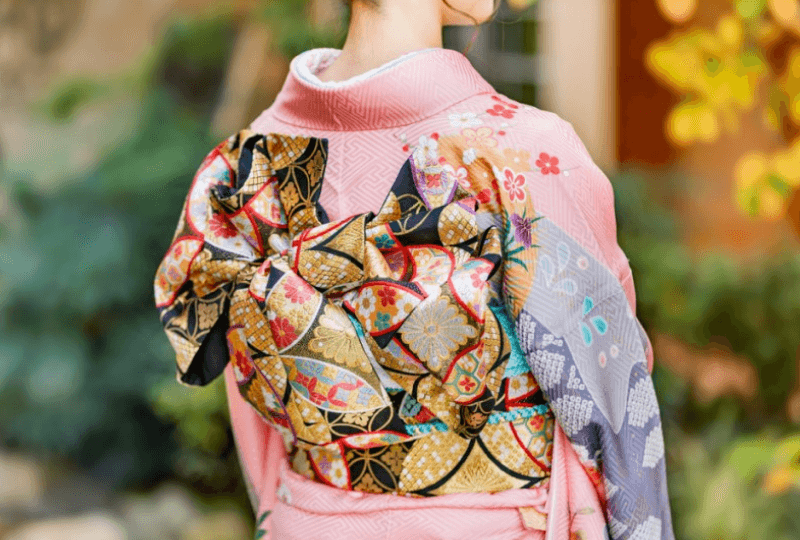
Coordinate by Color and Pattern
A general rule is to contrast the obi with the kimono. For example, if your kimono features soft, subdued colors, you can choose an obi belt with a bolder, richer tone to serve as a visual centerpiece. Conversely, a colorful kimono pairs beautifully with a solid or subtly patterned kimono belt. Always aim for balance—avoid matching patterns that compete with one another.
Consider Season and Occasion
Seasonality matters. Floral motifs like cherry blossoms (sakura) are perfect for spring, while maple leaves (momiji) suit autumn. Formal events call for structured fukuro or maru obi, while summer festivals are ideal for colorful hanhaba obi worn with lightweight yukata.
Add Accessories for Depth
Don’t overlook accessories like obijime (decorative cord), obidome (ornamental clasp), and obiage (obi scarf). These enhance the appearance and hold the obi in place, adding color contrast and personal flair.
Experiment with Modern Fusion
For fashion-forward looks, some people pair kimono obi belts with dresses, jumpsuits, or streetwear—blending East and West. This hybrid styling trend keeps tradition alive while making it wearable for everyday life.
6. Obi Belts In Modern Fashion
While rooted in centuries of tradition, the kimono obi belt has found new life in modern fashion, both in Japan and globally. Designers and stylists now reimagine the obi beyond its original role, transforming it into a bold statement accessory.
In Japan, contemporary brands blend traditional textiles with modern silhouettes. Obi belts are paired with Western-style dresses, jumpsuits, or even suits, adding texture, color, and cultural flair. Streetwear and haute couture alike are embracing this crossover trend—showcasing obi-inspired belts in runways and fashion editorials.
Outside Japan, fashion enthusiasts have begun incorporating the kimono belt into casual and formal outfits. A wide obi-style belt can cinch the waist of a minimalist dress or elevate a simple blouse and skirt combo. Celebrities and influencers have also adopted this look, making the obi a versatile piece for creative layering.
This evolution doesn’t dilute tradition—it honors it. By integrating the obi belt Japan style into everyday wardrobes, a new generation continues the legacy of kimono culture in a fresh, accessible way.
7. Where To Buy Authentic Obi Belts
Finding an authentic kimono obi belt outside Japan can be challenging, but there are several trusted online platforms where you can explore a wide selection of genuine pieces.
Popular Japanese e-commerce sites such as Amazon Japan, Rakuten, JDirectItems Auction, Mercari offer everything from formal fukuro obi to casual hanhaba obi in a variety of materials, colors, and patterns. However, these platforms often limit international shipping and use only Japanese-language interfaces.
That’s where Janbox comes in—a highly trusted Japanese proxy service that allows you to purchase products directly from Japanese websites. Janbox handles the entire buying process for you, including ordering, domestic shipping within Japan, international delivery, and even item consolidation. With multilingual support and transparent fees, it’s an excellent option for sourcing authentic obi belt Japan designs from sellers who don’t ship overseas.
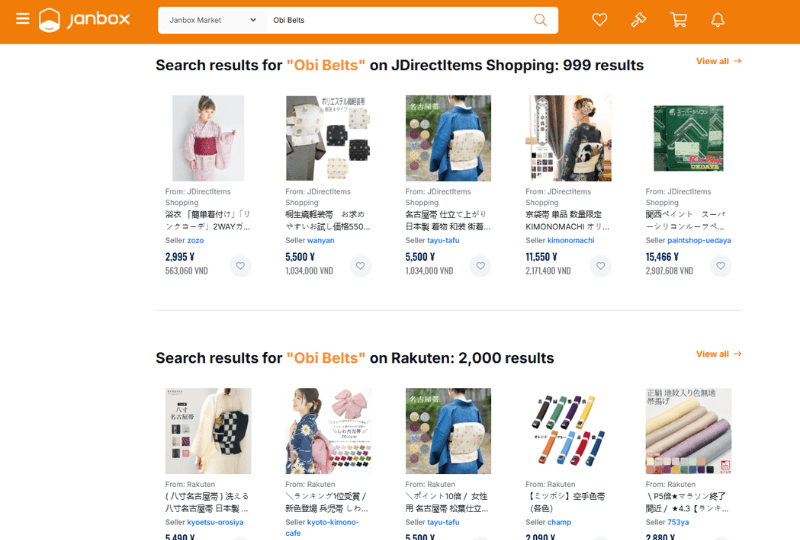
Other reputable specialty stores include Japan Objects Store, Kyoto Kimono, and Ichiroya, which focus on traditional, vintage, and high-quality selections.
Before purchasing, always consider the formality, material, and intended use of the kimono belt to ensure it fits your needs and preserves the spirit of Japanese craftsmanship.
>>> Read more: How To Buy From Rakuma Japan: A Thorough Beginner’s Guide
8. Conclusion
The kimono obi belt is more than a decorative accessory—it is a living symbol of Japan’s cultural elegance, craftsmanship, and timeless style. Whether worn with a formal kimono or styled in contemporary fashion, the obi continues to bridge the past and present. By understanding its history, types, and styling methods, you can fully appreciate its cultural value. Ready to embrace the art of the obi? Explore, experiment, and bring a touch of Japanese tradition into your personal wardrobe.
Website: https://janbox.com
Email: [email protected]



